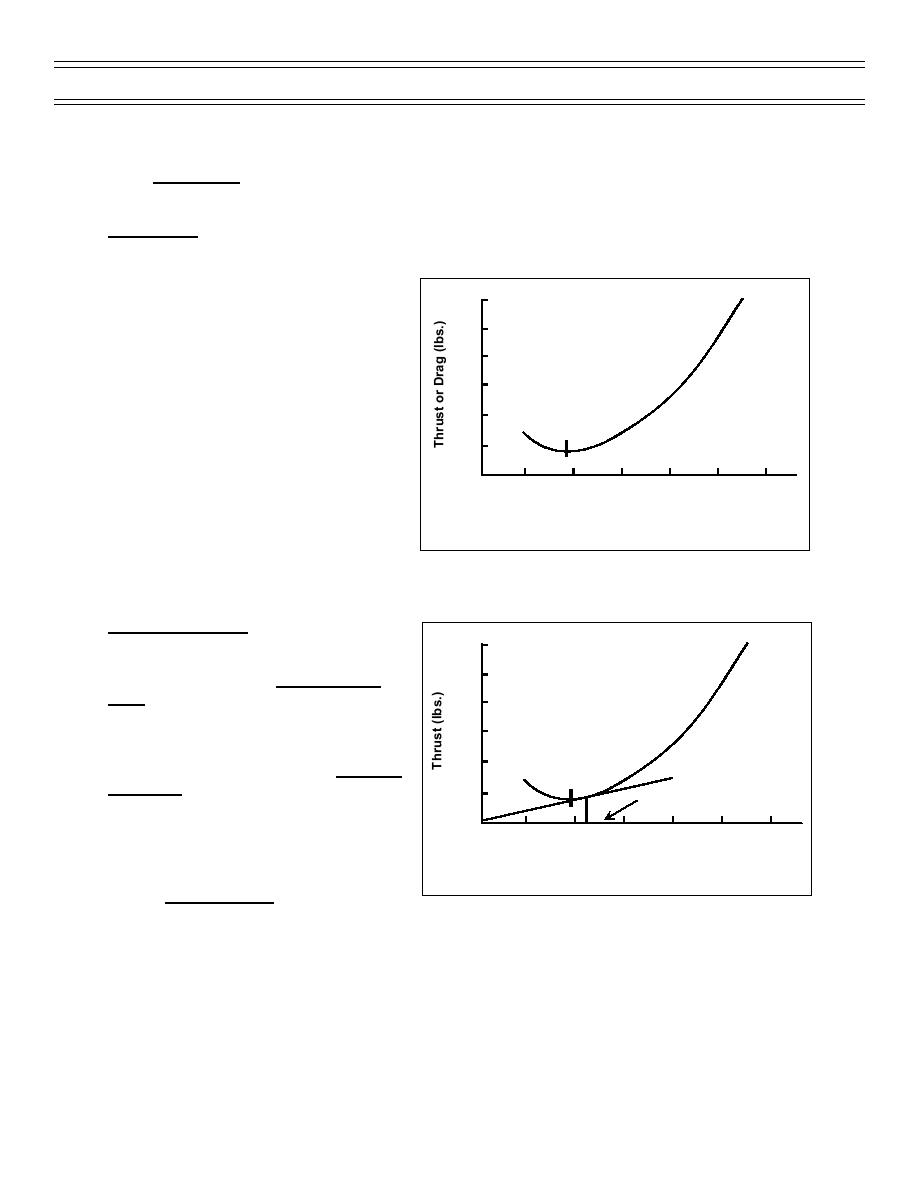
Aero Chapter 05/06 (TS) and 05 (ADV & IUT), Thrust and Thrust Curve Review
T-45 Aerodynamics Student Workbook
THRUST-REQUIRED CURVE (Tr)
Recall induced drag results from the production of lift. Induced drag dominates at low airspeeds and is
nearly negligible at high airspeeds and low angles-of-attack.
Parasite drag is drag resulting from skin friction and form (or frontal area of the aircraft). Parasite drag is
very low at low airspeeds and dominates at high airspeeds.
Total drag is the sum of parasite and
induced drag (Figure 88). The total drag
6,000
curve is frequently referred to as the thrust
5,000
required (Tr) curve because thrust is the
SEA LEVEL
force acting opposite drag. Thrust required
STANDARD DAY
4,000
DT = Tr
(CLEAN)
for any airspeed may be determined from a
3,000
thrust-required curve. At the point where
total drag and thrust required are at a
2,000
minimum, the lift-to-drag ratio will be
(L/D )
MAX
maximum and is referred to as (L/D)max.
1,000
0
(L/D)max
0
100
200
300
400
500
600
At (L/D)max the wing (actually the entire
TRUE AIRSPEED - KNOTS
airframe including the wings) is at its most
Figure 88: TOTAL DRAG = THRUST REQUIRED
efficient operating point, producing the most
lift for the least drag. The airspeed/AOA for
maximum endurance, maximum climb
angle, and maximum power-off glide range occur at (L/D)max in turbojet or turbofan aircraft.
Maximum endurance is found at (L/D)max
because thrust required and thus fuel flow
6,000
(fuel required) are at a minimum, giving
5,000
maximum time airborne. Maximum climb
SEA LEVEL
angle is also found at (L/D)max. At (L/D)max,
Tr
STANDARD DAY
4,000
thrust required is at a minimum and all
(CLEAN)
excess thrust available can be converted to
3,000
climb angle which is obstacle avoidance
2,000
climb angle and not rate-of-climb. Maximum
(L/D )
glide range is also found at (L/D)max because
MAX
1,000
VMR
the airframe is at its most efficient operating
point and drag is at a minimum. Note it is
0
0
100
200
300
400
500
600
power-off glide range, which is at (L/D)max
TRUE AIRSPEED - KNOTS
and not maximum powered range. The lift -
Figure 89: T-45 TOTAL DRAG (MAX RANGE)
to-drag ratio is also the glide ratio of the
aircraft. Maximum range is found on the
thrust-required curve at the point where the
ratio of airspeed to Tr is greatest (Figure 89). Maximum range may also be found by drawing a line from
the point of origin tangent to the thrust-required curve. This point defines maximum range airspeed (no-
wind).
Maximum range airspeed and AOA will vary with the aircraft’s gross weight. As the weight decreases due
to the fuel burn in the T-45, the AOA for max range increases from 12 to 13 units and the airspeed
decreases accordingly. Maximum range airspeed and AOA are drastically affected by extension of
landing gear and flaps as the T-45 bingo charts indicate.
(7-99) Original
Page 55



 Previous Page
Previous Page
